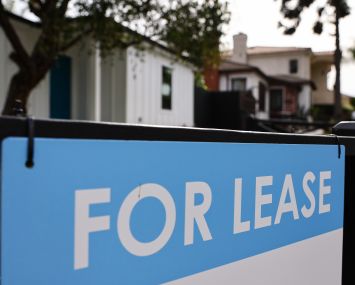It’s hard to imagine now, but only a few decades ago the South Street Seaport was an important part of New York City’s working waterfront.
Photographer Barbara Mensch had moved to a warehouse by the Fulton Fish Market in the early 1980s, and found herself spending time among the dockhands, fishermen, fishmongers and homeless men who populated the waterfront. She went out at night with her black-and-white film camera and captured men carving tuna with large knives or pushing hundreds of pounds of fish around in rickety carts.
SEE ALSO: Single-Family Rental, Build-to-Rent Investment Is Crucial Now
Meanwhile, the FBI and the U.S. attorney for the Southern District of New York had begun investigating mafia activity at the market. And the city had started talking to real estate companies about redeveloping the area for retail and moving the fish market to the Bronx.
When the Howard Hughes Corporation finally redeveloped the landmark Tin Building, it approached Mensch about displaying her photos inside one of the entrances. The architect of record on the project, Calder Smith, decided to turn a lobby on the southeast corner of the building into a gallery of more than 300 of Mensch’s black-and-white photos of the fish market.
Multiple walls are covered with special LED photo screens in varying sizes, which the architects have programmed with a rotating selection of images. They’re set into custom-cut wood frames arranged into an asymmetrical grid along two walls, which are connected via a long, diagonal wood panel that stretches across the ceiling 14 feet above the floor. The wood ceiling panel is painted dark blue, much like the walls and doors in the space, and includes painted gold accents along the side of the structure and in lines every few feet across the panels.
The elevator doors are also gold, along with the door handles to the businesses on the other side of the lobby. Huge quartets of screens are arranged above the elevators, with four LED panels arranged together to display one large photo or distinct individual ones. Some of the images show vintage market signs, industrial equipment or beat-up couches in break areas, but most are devoted to chronicling the fish market’s workers.
The entrance with the gallery isn’t the main one, but the architects still wanted it to have a presence and a mood. The renovation involved literally moving the building out from under the FDR Drive so it could be elevated above the flood plain, and the main entrance still faces the highway.
“The Tin Building was built there before the FDR, and it ended up under the edge when they built it,” explained Yvonne Choy, a senior associate at Calder Smith who worked on the project. “Howard Hughes moved the building 30 feet and raised it 6 feet. They had to raise the building for FEMA [flood regulations], but they moved it back 32 feet in order to avoid hitting the FDR. It gave it a little more presence in terms of seeing it as a building. The gallery is like a little gem in the corner.”
Rebecca Baird-Remba can be reached at rbairdremba@commercialobserver.com.


